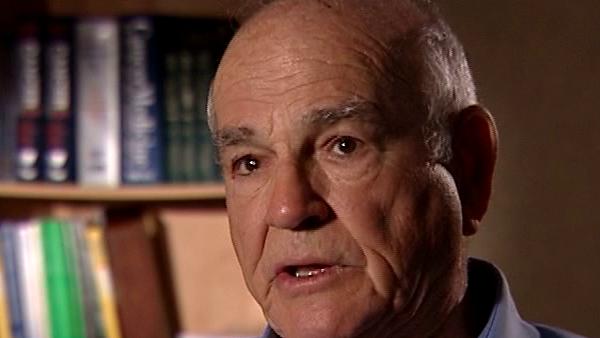NEXT STORY

Teaching undergraduates at Stanford
RELATED STORIES

NEXT STORY

Teaching undergraduates at Stanford
RELATED STORIES



While I was in Oxford I decided to close my lab. I kept it going for a year or two but it's just… it’s just not a great idea to be a… a absentee landlord and also I… although the work that I did in Oxford has actually turned into something fascinating because when I got there, Raymond Dwek, Professor Dwek, you know, he and I talked about what I'd work on, and I said, you know, there's not an awful lot known about the glycobiology of hepatitis B virus. Now, we knew the… there had been some work on attachment sites where the sugars tie on, and, as you know, a lot of infectious agents and virus, a lot of them have sugars on them, like HIV is… is loaded with sugar, it's kind of a sweet virus in the sense it's got lots of sugar attachments, and HBV, hepatitis B virus, has three attachments sites, I think that's still the current view and not much was known about it. But these… these sugars have an awful lot to do with the, what you might call the destiny of the… of… of a cell or a protein, protein in… it depends on the tropism, you know, and how it interacts, how it enters the cell, so it's really vital stuff. So I said, okay, we'll do a kind of systematic study of the glycobiology, and… and that was the kind of overall framework but then… but Raymond was working on, you know, the effect… synthetic sugars that would interfere with glycosylation, so the notion was if you could… and he was studying that in terms of the changes in rheumatoid arthritis and cancer and a whole bunch of other really fascinating stuff. I said, so the argument was, well, interfering with glycosylation may affect some aspects of hepatitis B virus. We started that work when I was there and it's continued ever since, there… there are several therapies that are in various stages of trial, none of them have been… I think there's... no wait, I think some of them are still at a stage two, I think, there's some going on, it's been taken up by more and more companies and, you know, it's promising and not here yet. But… but meanwhile a great deal was learned about the assembly of the virus, its tropism and how it, you know, how it… and how it interacts with stuff out… that's not produced by the gene. The… the interesting thing about glycosylation, it's a post-translation of event, and that greatly changes the character of the protein, so that means you can have the same proteins with different glycosylation so, again, that's a non-deterministic biochemical level character of genes, and it's not often taken into account that all… all proteins aren't created the same. They're created the same but they don't change, they don't end up the same because the post-translational events are affected by some… what you eat essentially or a whole bunch of other phenomenon.
American research physician Baruch Blumberg (1925-2011) was co-recipient of the Nobel Prize in Physiology or Medicine in 1976 along with D Carleton Gajdusek for their work on the origins and spread of infectious viral diseases that led to the discovery of the hepatitis B virus. Blumberg’s work covered many areas including clinical research, epidemiology, virology, genetics and anthropology.
Title: Glycobiology of the hepatitis B virus
Listeners: Rebecca Blanchard
Dr Rebecca Blanchard is Director of Clinical Pharmacology at Merck & Co., Inc. in Upper Gwynedd, Pennsylvania. Her education includes a BSc in Pharmacy from Albany College of Pharmacy and a PhD in Pharmaceutical Chemistry from the University of Utah in Salt Lake City. While at Utah, she studied in the laboratories of Dr Raymond Galinsky and Dr Michael Franklin with an emphasis on drug metabolism pathways. After receiving her PhD, Dr Blanchard completed postdoctoral studies with Dr Richard Weinshilboum at the Mayo Clinic with a focus on human pharmacogenetics. While at Mayo, she cloned the human sulfotransferase gene SULT1A1 and identified and functionally characterized common genetic polymorphisms in the SULT1A1 gene. From 1998 to 2004 Dr Blanchard was an Assistant Professor at Fox Chase Cancer Center in Philadelphia. In 2005 she joined the Clinical Pharmacology Department at Merck & Co., Inc. where her work today continues in the early and late development of several novel drugs. At Merck, she has contributed as Clinical Pharmacology Representative on CGRP, Renin, Losartan, Lurasidone and TRPV1 programs and serves as chair of the TRPV1 development team. Dr Blanchard is also Co-chair of the Neurology Pharmacogenomics Working Group at Merck. Nationally, she has served the American Society of Clinical Pharmacology and Therapeutics on the Strategic Task Force and the Board of Directors. Dr Blanchard has also served on NIH study sections, and several Foundation Scientific Advisory Boards.
Tags: Raymond Dwek
Duration: 3 minutes, 16 seconds
Date story recorded: September 2007
Date story went live: 28 September 2009